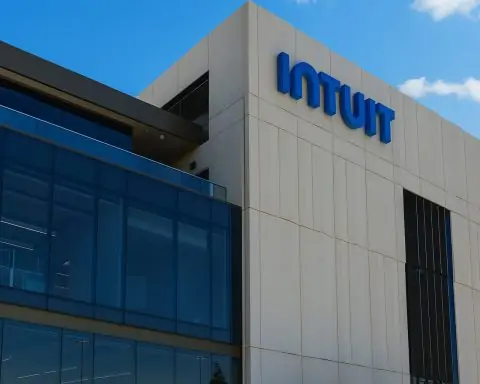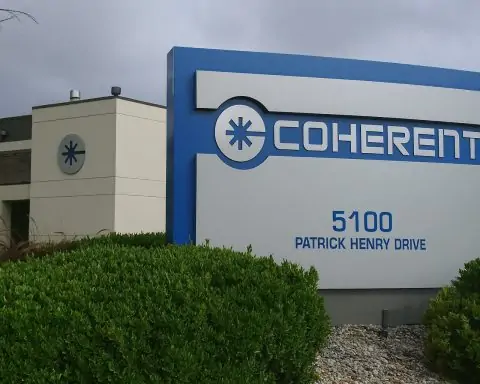Nvidia (NVDA) stock news for Nov. 22, 2025 – record Q3 earnings, massive AI chip demand, fresh Wall Street price targets, U.S.–China export shifts and mounting AI bubble debate.
- NVDA stock is trading around $179 after a volatile post‑earnings week – down high single digits for November but still up more than 36% year to date. [1]
- Nvidia reported record Q3 FY2026 revenue of $57.0 billion, up 62% year over year, with data center revenue surging to $51.2 billion; Q4 revenue is forecast at $65 billion, above Wall Street expectations. [2]
- Evercore lifted its price target to $352, implying roughly 95% upside, citing explosive demand for Blackwell chips; Raymond James upgraded Nvidia to “strong‑buy” as Street consensus targets move into the mid‑$200s. [3]
- The Trump administration is considering allowing Nvidia to sell H200 AI chips to China, in what could be a major reversal of prior export curbs and a significant growth lever if approved. [4]
- New 13F filings show some institutions trimming NVDA positions while others add aggressively, but roughly 65% of shares remain institutionally owned; insiders have sold about $583 million in stock over the last quarter. [5]
- Retail enthusiasm is still intense, with NVDA among the week’s most talked‑about tickers on X and WallStreetBets, even as commentators warn about AI bubble risks and urge diversification. [6]
- Competition is heating up: Warren Buffett’s $4.3 billion stake in Alphabet is being read as a bet on Google’s custom TPUs and a more competitive AI chip landscape, even as Nvidia remains the clear performance leader. [7]
Nvidia stock today: NVDA holds near $179 after a wild AI week
As of the latest trade, Nvidia Corporation (NASDAQ: NVDA) is changing hands around $178.88, after hitting an intraday high of $184.45 and a low near $173 in heavy trading. That puts the stock down roughly 0.9% on the day, capping a choppy week in which post‑earnings gains faded alongside a broader tech sell‑off.
Despite November weakness — Nvidia shares are down almost 8% this month but still up more than 36% in 2025, according to Reuters — the company remains one of the market’s giants, with an equity value a little above $4.3–4.4 trillion and about 24.3 billion shares outstanding. [8]
Valuation is still rich. MarketBeat data pegs Nvidia’s trailing P/E around 51, while AInvest calculates about 44.5x based on slightly different inputs; Reuters estimates a forward P/E near 28.4, still a premium to the semiconductor industry average around the low‑30s. [9]
Earnings recap: record Q3 numbers and a massive AI pipeline
Nvidia’s dominant position in AI infrastructure is the core reason NVDA keeps commanding those premiums.
On November 19, Nvidia reported Q3 FY2026 results that smashed already‑lofty expectations: [10]
- Revenue: $57.0 billion, up 22% quarter‑on‑quarter and 62% year‑on‑year
- Data center revenue: $51.2 billion, up 25% sequentially and 66% year‑on‑year
- GAAP & non‑GAAP EPS: $1.30 per share, ahead of analysts’ consensus (roughly $1.26)
- Gross margin: around 73–74%, with management guiding to ~75% next quarter
For Q4 FY2026, Nvidia guided revenue to about $65 billion (±2%), again comfortably above Wall Street’s prior estimates in the low‑$60 billions. [11]
CEO Jensen Huang told investors that sales of its Blackwell AI platform are “off the charts,” with cloud GPUs effectively sold out and both training and inference workloads expanding rapidly, while CFO Colette Kress reiterated that access to China remains strategically important for the company and for U.S. AI competitiveness. [12]
Crucially, Nvidia also reiterated that it has roughly $500 billion in bookings for advanced AI chips through 2026, giving the company unusual visibility into future revenue. [13]
Wall Street resets the bar: 95% upside scenarios emerge
Those numbers triggered a wave of fresh analyst calls that dominate today’s NVDA news flow:
- Evercore ISI boosted its Nvidia price target to $352, implying almost 95% upside from recent levels, arguing that demand for Blackwell GB200/GB300 chips is even stronger than expected. The firm estimates Blackwell revenue jumped nearly 50% quarter‑over‑quarter to more than $13 billion, with Nvidia building inventory and securing longer‑dated supply commitments to meet a swelling order book. [14]
- Evercore further estimates Nvidia has already booked about $110 billion from its current compute pipeline, with roughly $390 billion of potential orders still ahead, and expects revenue growth to accelerate again into 2026 as deployments ramp. [15]
In a separate move closely watched by traders today, Raymond James Financial upgraded Nvidia to “strong‑buy,” joining a long list of bullish brokers. MarketBeat’s aggregation of analyst views now shows: [16]
- 4 “Strong Buy” ratings
- 46 “Buy” ratings
- 2 “Hold” ratings
- 1 “Sell” rating
The average 12‑month target sits around $257.79, while AInvest’s compilation puts consensus closer to $246.81 — both implying 30–40% upside from today’s price and cementing Nvidia as one of Wall Street’s highest‑conviction AI names. [17]
CoinCentral’s wrap‑up of the post‑earnings action notes that NVDA fell roughly 3% immediately after the report as investors worried about rich valuations, even as Street targets stepped higher and average expectations moved to the $250 area. [18]
Washington’s wildcard: H200 exports to China back on the table
One of the most consequential headlines for Nvidia on November 22 concerns U.S.–China tech policy.
Reuters reports that the Trump administration is considering allowing Nvidia to resume sales of its high‑end H200 AI chips to China, reversing earlier curbs that essentially wiped out Nvidia’s China data‑center business. The Commerce Department is reviewing a change to its policy of barring these exports; officials stress that plans could still change, and no final decision has been announced. [19]
The H200 is estimated to be roughly twice as powerful as Nvidia’s H20, currently the most advanced AI accelerator that can be legally shipped to China under existing rules. [20] Any policy shift would therefore have large commercial and geopolitical implications.
A widely read Benzinga piece quotes Gene Munster of Deepwater Asset Management arguing that potential H200 approval could dramatically boost Nvidia’s 2025 growth versus current Street models, given how sharply China sales collapsed after export bans. [21]
On Nvidia’s earnings call earlier this week, CFO Colette Kress said the company is “disappointed” by rules that prevent it from shipping more competitive data‑center products to China and remains committed to engaging with both governments on trade restrictions. [22]
Investor takeaway: the H200 review injects fresh upside optionality into Nvidia’s story — but it also underscores how dependent the company’s long‑term earnings power is on U.S. export policy, which can shift with political winds.
Big money moves: institutions shuffle, insiders take profits
Today’s flow of 13F‑driven headlines shows that large investors are actively re‑balancing their Nvidia exposure rather than abandoning it.
MarketBeat’s round‑up of second‑quarter filings highlights: [23]
- The University of Texas / Texas A&M Investment Management Co. cut its NVDA stake by 12.7%, selling 21,955 shares and ending the quarter with 150,932 shares worth about $23.85 million. Even after trimming, Nvidia remains the fund’s third‑largest holding at 3.7% of its portfolio.
- Ingalls & Snyder LLC reduced its position by 2.6% to roughly 239,316 shares (about $37.8 million), making Nvidia around 1.3% of its assets and its 12th‑largest holding. [24]
- Jordan Park Group LLC lowered its NVDA stake by 3.4% to 56,679 shares, valued near $9.0 million, where the stock represents 0.6% of the portfolio. [25]
- On the other side, Fiduciary Wealth Partners LLC boosted its position by 55.7% to 9,923 shares worth roughly $1.57 million, making Nvidia its 12th‑largest holding and 1.5% of assets. [26]
- Robo‑advisor Wealthfront Advisers LLC increased its already‑large stake by 0.9% to about 4.15 million shares, a position worth an estimated $656.4 million and ranked as the firm’s 14th‑largest holding. The same filing highlights other big institutions like UBS and Goldman Sachs significantly increasing their Nvidia exposure. [27]
Across these filings, MarketBeat calculates that about 65.27% of Nvidia’s stock is held by institutional investors, underlining that — despite profit‑taking — the “smart money” remains heavily committed. [28]
Insider activity has tilted toward selling. A MarketBeat summary of recent Form 4 disclosures notes that CEO Jensen Huang and CFO Colette Kress are among insiders who collectively sold about 3.25 million shares in the last 90 days, worth roughly $583 million, leaving insiders with approximately 4.17% of shares outstanding. [29]
Insider selling after a major run‑up is common and doesn’t automatically signal trouble, but it does feed into broader debates about whether Nvidia’s AI boom is already priced in.
Retail buzz, Cramer, and the AI bubble debate
On the retail side, Nvidia is still one of the most talked‑about stocks on the internet. Benzinga’s weekly sentiment report finds that NVDA was among the top five tickers discussed on X and Reddit’s r/WallStreetBets between November 17–21, driven by the earnings print, AI hype, and the stock’s sharp intraday swings. [30]
TV personality Jim Cramer, a long‑time Nvidia bull, weighed in this week, calling Nvidia an “all‑powerful” stock that has “started to blind people” to other opportunities. He reiterated his view that investors should own Nvidia rather than trade it, but warned against letting a single name dominate their portfolio or attention. [31]
At the macro level, AI bubble talk is back in force:
- ABC News framed Nvidia’s 62% revenue growth as a strong rebuttal to AI bubble warnings, quoting Wharton professor Lynn Wu who describes modern AI as a “general purpose technology” similar to electricity or the internet — transformative but prone to speculative excess in its early phases. [32]
- A detailed Reuters analysis notes that although Nvidia’s forecast calmed AI bubble jitters “for now,” investors remain anxious about hyperscalers’ massive capex plans, the circular nature of some AI deals, and logistical constraints like energy and memory supply. Nvidia’s stock, Reuters points out, is up more than 36% this year but down almost 8% in November, and trades at a forward P/E of about 28.4. [33]
- CBS News highlights Wedbush analyst Dan Ives, who calls the latest numbers a “huge” beat‑and‑raise that should re‑ignite the bullish tech trade into year‑end, arguing that fears of an AI bubble are overstated relative to Nvidia’s fundamental performance. [34]
The result is a split narrative: fundamentals are undeniably strong, but so is the sense that Nvidia is balancing on a very high wire.
Rising competition: Alphabet’s TPUs and Buffett’s bet
Today’s tech news isn’t just about Nvidia — it’s also about who might challenge it.
A Times of India article frames Warren Buffett’s roughly $4.3 billion stake in Alphabet as a strategic bet on Google’s vertically integrated AI stack and its custom Tensor Processing Units (TPUs), rather than a simple search‑ad play. [35]
Key points from that piece: [36]
- Alphabet has been developing TPUs for nearly a decade and recently announced general availability of its seventh‑generation “Ironwood” TPU, designed for demanding training and high‑volume inference workloads via Google Cloud.
- Google now controls more of the AI “stack” — chip design, data centers, and end‑user products like Gemini — potentially gaining cost and supply advantages versus companies reliant on third‑party GPUs.
- Analysts cited in the article suggest TPU‑based training can offer meaningful cost savings versus GPU‑heavy setups in some workloads, though exact figures are not always public.
- The takeaway is not that Nvidia has been dethroned — its GPUs remain the industry standard and are still in chronic short supply — but that the AI compute market is entering a more competitive era, especially at hyperscale cloud providers.
Combined with other developments — like custom AI chips at Microsoft, Amazon, and Meta — the Buffett/Alphabet story is a reminder that Nvidia’s current dominance is powerful but not guaranteed forever.
Nvidia’s risk–reward profile after today’s headlines
Putting all of today’s NVDA news together, the bullish and bearish cases look something like this:
Bullish drivers
- Explosive, visible growth: Q3 revenue growth of 62% and Q4 guidance above expectations, plus $500 billion in booked demand through 2026, give Nvidia unusually clear multi‑year visibility. [37]
- Blackwell momentum: Evercore’s channel checks pointing to a 50% QoQ jump in Blackwell revenue and fully‑booked cloud GPU supply reinforce the view that Nvidia is still supply‑constrained, not demand‑constrained. [38]
- Street alignment: A wall of Buy/Strong‑Buy ratings and rising price targets into the mid‑$200s and mid‑$300s shows that most analysts still see substantial upside, even after a multi‑year run. [39]
- Potential China upside: Any change that allows H200 exports to China could unlock a large incremental market that current models largely discount. [40]
Key risks
- Valuation stretch: Even after the recent pullback, Nvidia trades at a forward P/E near 28–30, above peers and on top of a three‑year move of more than 1,100%, according to Reuters. [41]
- Policy and geopolitics: Export rules, especially around China, are a major swing factor. The same policy tools that might re‑open the market could also tighten again if geopolitical tensions flare. [42]
- Macro AI capex cycle: Several articles this week underscore concerns that hyperscalers may eventually moderate AI spending, or that energy and memory bottlenecks could slow data‑center build‑outs. [43]
- Competition from custom silicon: Alphabet’s TPUs, along with other custom chips at major cloud providers, may gradually chip away at Nvidia’s share of the most profitable workloads, even if GPUs stay central to the ecosystem. [44]
What to watch next
Looking beyond today’s headlines, a few near‑term catalysts stand out:
- Investor events: Nvidia will present at the UBS Global Technology and AI Conference on December 2, where investors will hunt for incremental color on demand, supply, and China strategy. [45]
- Regulatory updates: Any formal announcement on H200 export rules will likely move the stock and reset long‑term revenue expectations for China. [46]
- Hyperscaler commentary: Earnings and capex updates from Microsoft, Amazon, Alphabet, and Meta will give clues about whether the AI infrastructure build‑out is still accelerating or starting to normalize. [47]
- Competitive roadmaps: Progress updates on Google’s Ironwood TPUs and other custom accelerators will help investors gauge how durable Nvidia’s current moat really is. [48]
Final word
Nvidia remains the defining stock of the AI era: a company with staggering growth, extraordinary profitability, and a central role in the global compute stack — but also one whose fortunes are now intertwined with geopolitics, macro AI capex, and intensifying competition.
For investors, today’s November 22, 2025 news cycle underscores a simple reality: NVDA is both a generational growth story and a high‑stakes bet. Any decision about owning the stock should factor in not just the upside narrative, but also the policy, valuation, and competitive risks that come with it.
This article is for information only and does not constitute investment advice. Consider your own objectives, risk tolerance, and (ideally) professional guidance before making any investment decisions.
References
1. www.reuters.com, 2. investor.nvidia.com, 3. m.economictimes.com, 4. www.reuters.com, 5. www.marketbeat.com, 6. www.benzinga.com, 7. timesofindia.indiatimes.com, 8. www.reuters.com, 9. www.marketbeat.com, 10. investor.nvidia.com, 11. investor.nvidia.com, 12. investor.nvidia.com, 13. www.reuters.com, 14. m.economictimes.com, 15. m.economictimes.com, 16. www.marketbeat.com, 17. www.marketbeat.com, 18. coincentral.com, 19. www.reuters.com, 20. www.reuters.com, 21. www.benzinga.com, 22. www.investopedia.com, 23. www.marketbeat.com, 24. www.marketbeat.com, 25. www.marketbeat.com, 26. www.marketbeat.com, 27. www.marketbeat.com, 28. www.marketbeat.com, 29. www.marketbeat.com, 30. www.benzinga.com, 31. www.insidermonkey.com, 32. abcnews.go.com, 33. www.reuters.com, 34. www.cbsnews.com, 35. timesofindia.indiatimes.com, 36. timesofindia.indiatimes.com, 37. investor.nvidia.com, 38. m.economictimes.com, 39. www.marketbeat.com, 40. www.reuters.com, 41. www.reuters.com, 42. www.reuters.com, 43. www.reuters.com, 44. timesofindia.indiatimes.com, 45. nvidianews.nvidia.com, 46. www.reuters.com, 47. www.investopedia.com, 48. timesofindia.indiatimes.com







